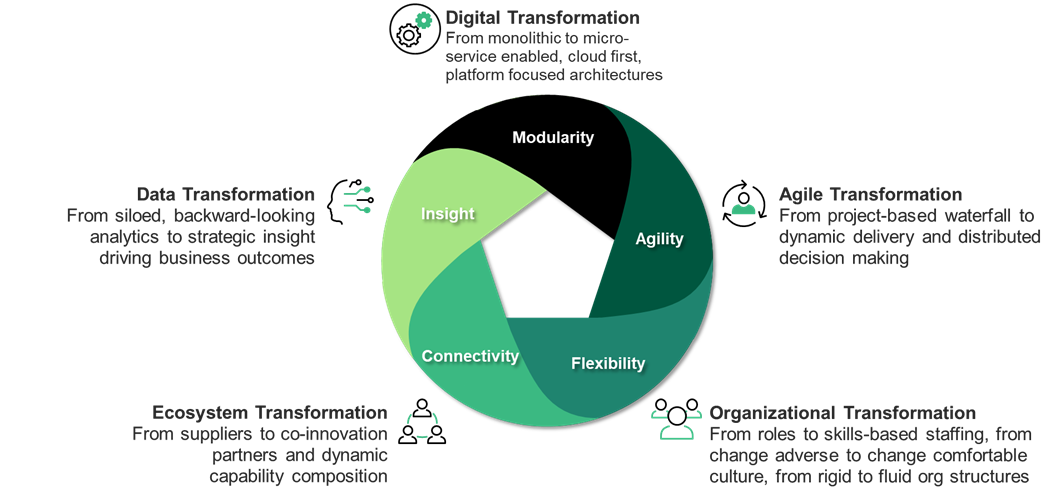Digital Transformation: Don’t Drive Your Sports Car At Bicycle Speed
Many organizations are actively modernizing their tech stack but find themselves driving a sports car at bicycle speed — without a GPS.
Successful organizations start by asking which race they are participating in before choosing a car. They equip drivers and mechanics with the skills needed to push that car to the limit. They choose the right partners that provide complimentary capabilities, and they source the right data to analyze performance and provide direction.
The result is a balanced system of platforms, people, practices, partners, and data that is always tweaked to high performance. Regular pit stops, debriefs and health checks are used to conduct incremental improvements, keeping the system competitive.
At Forrester, we suggest conducting a similar health check for your transformation journey. Akin to our racing analogy above, a successful enterprise transformation needs to pay attention to multiple dimensions of change to truly realize incremental value. Leveraging all these dimensions, future fit organizations operate in a fundamentally different way from their more traditional peers. As a result, they grow 1.8 times faster.
The Pillars Of Enterprise Transformation

Make Enterprise Transformation Your Path To Future Fit
It is important to recognize that all the dimensions that make organizations future fit are interdependent and foster each other. In practice, however, large-scale transformations are too often run as a loosely coupled collection of projects that lack the glue that makes these dimensions work together. Successful transformation leaders acknowledge that:
-
- Modularity is nothing without agility. Modern technology enables the fast reuse and recomposition of highly modular capabilities. Without agile principles, employees keep working on a Porsche using hammers and nails.
- Agility is nothing without insight. Agile development principles are unguided without meaningful insight that provides signals of value in the market. Iterating fast in the wrong direction only finds value by chance, not through insight.
- Talent is nothing without culture. Anyone can hire tech talent, but very few organizations can make such talent productive. A high degree of decision-making autonomy, modern productivity tools, and a culture that embraces change are essential. Without these ingredients, organizations end up paying expensive talent that is neither happy nor productive.
- Connectivity is nothing without flexibility. Ecosystem connectivity expands the choices of capabilities that can be leveraged quickly to deliver new forms of value. Without organizational structures that enable distributed decision-making, remove red tape, and provide the ability to quickly redirect resources to arising opportunities, the power of ecosystems is diminished.
To succeed in this complex endeavor, transformation leaders need to orchestrate across these dimensions, align their capabilities with corporate strategy, translate business outcomes into bite-sized roadmaps, and ensure delivery with dedicated transformation governance.
Let’s Connect
To learn more about the success factors of digital transformation, read my latest report to perform a health check of your transformation initiative. To discuss my research in further detail, please schedule an inquiry or guidance session.
